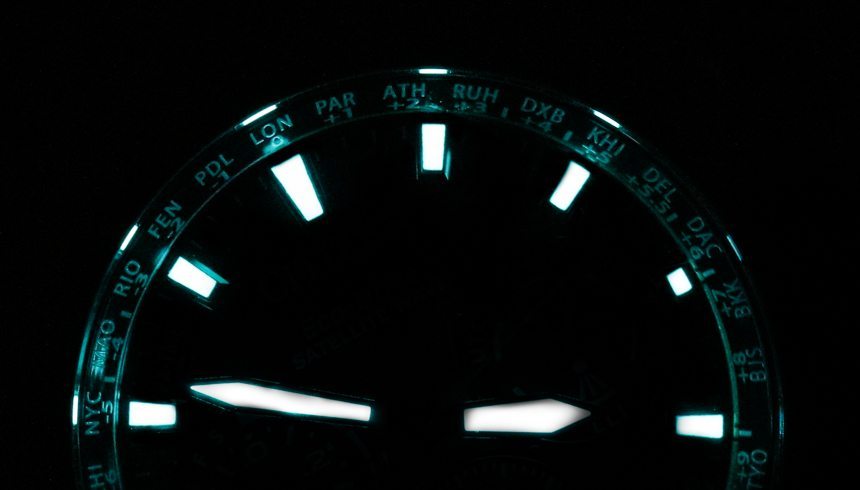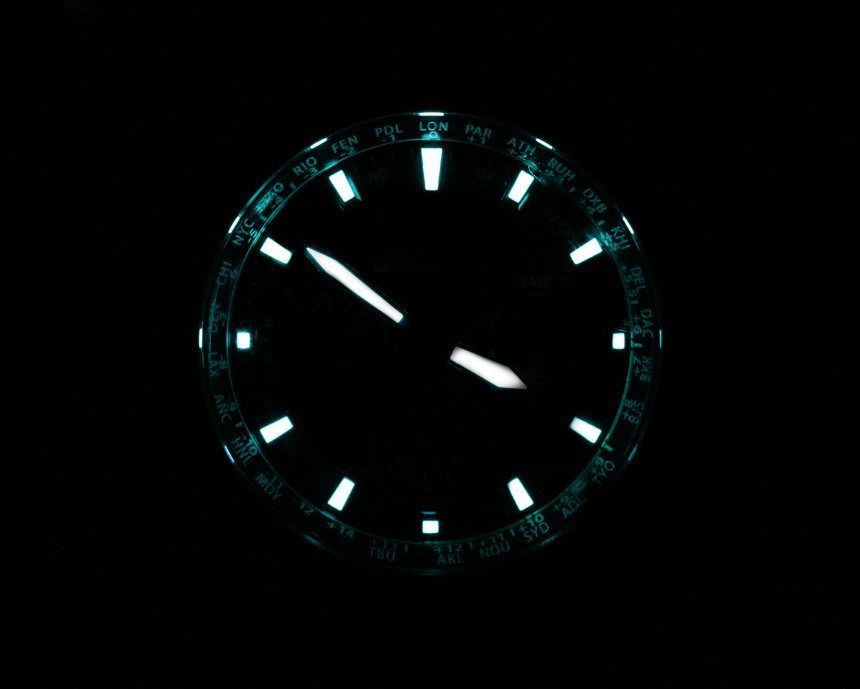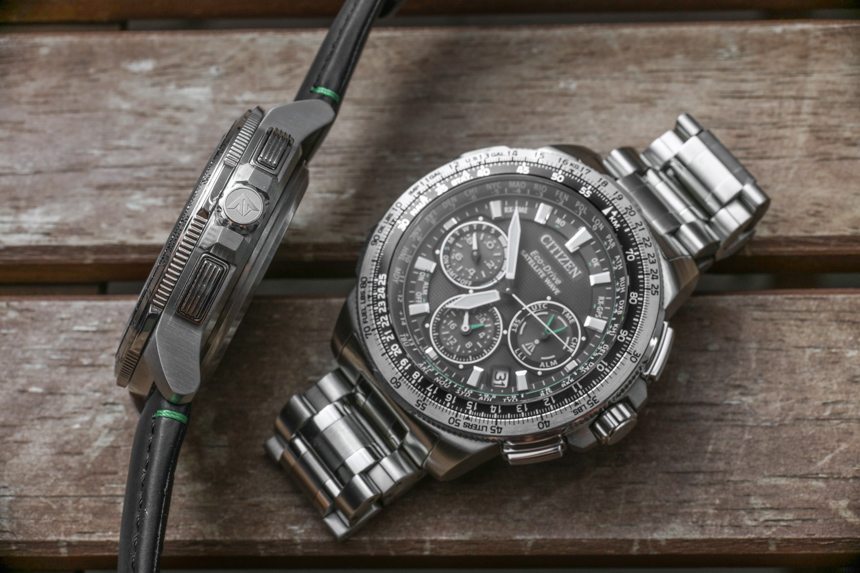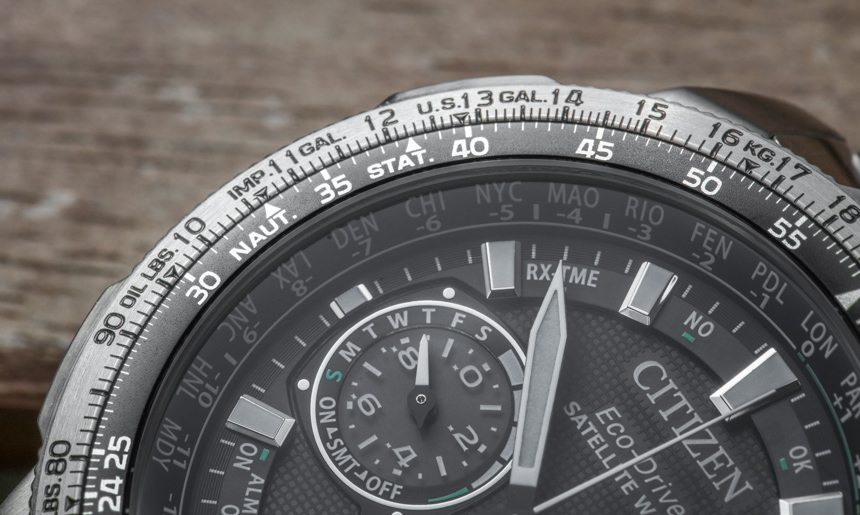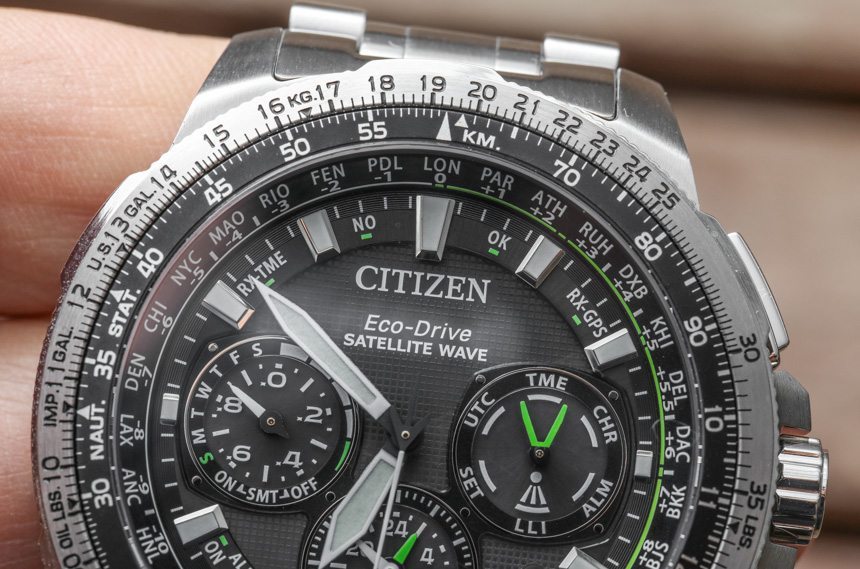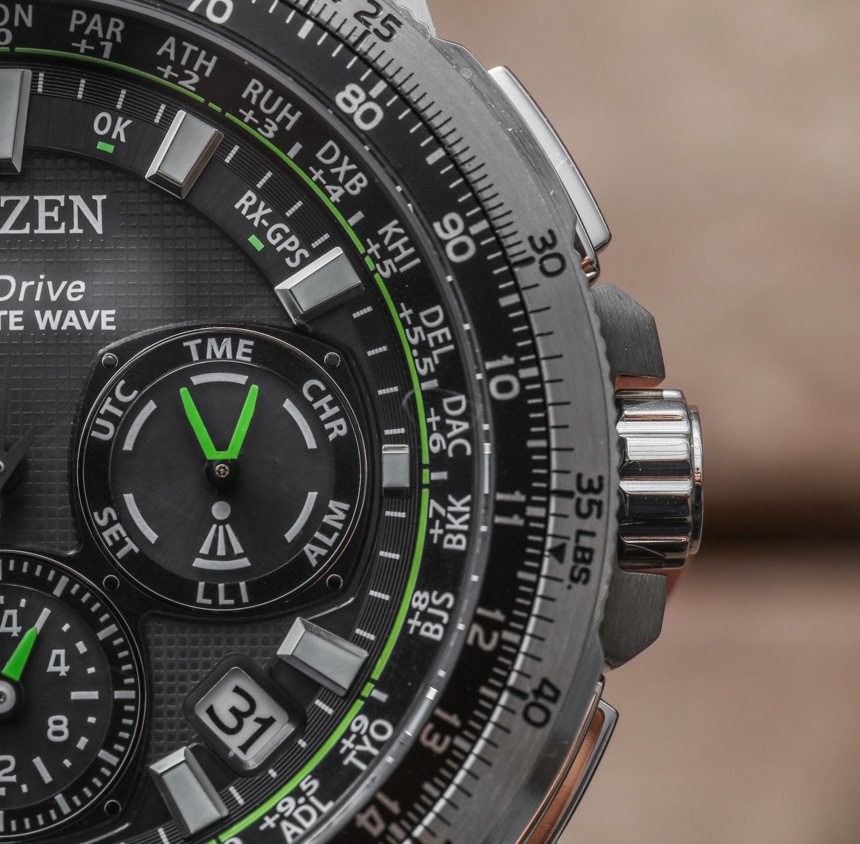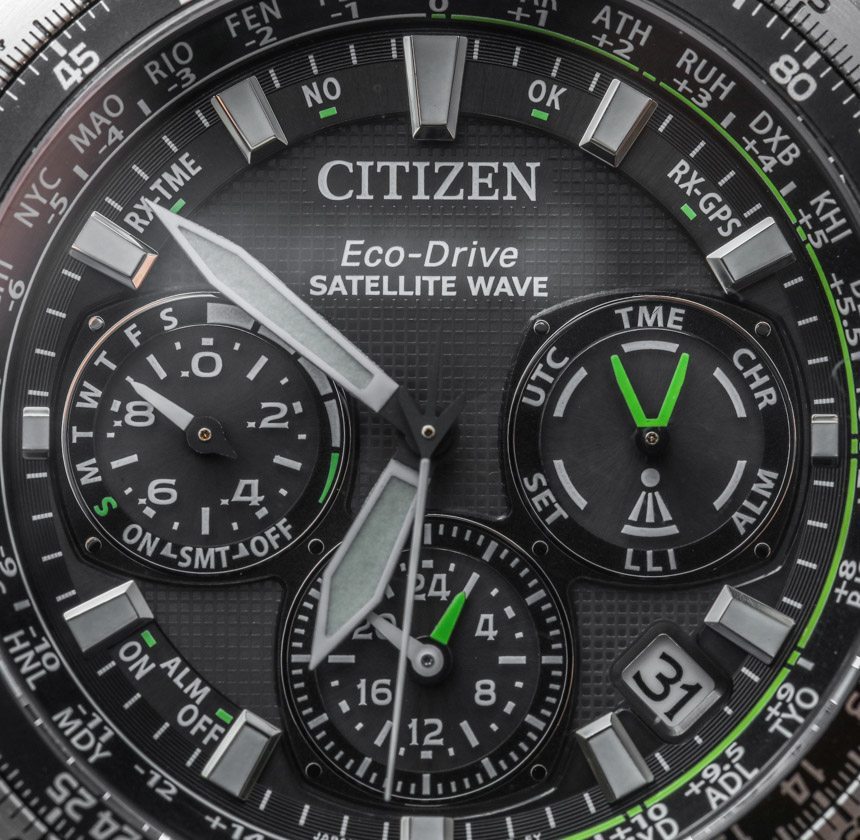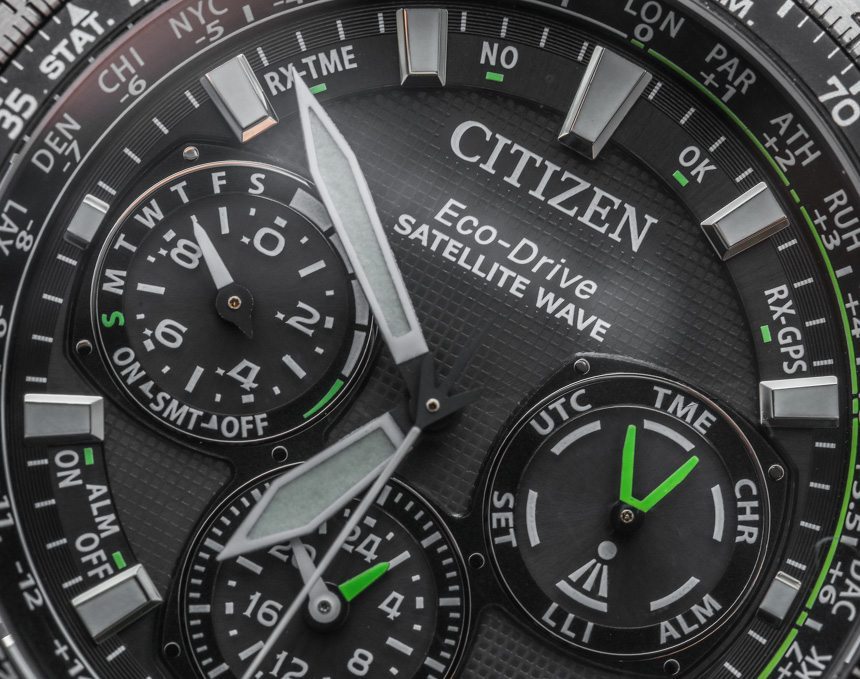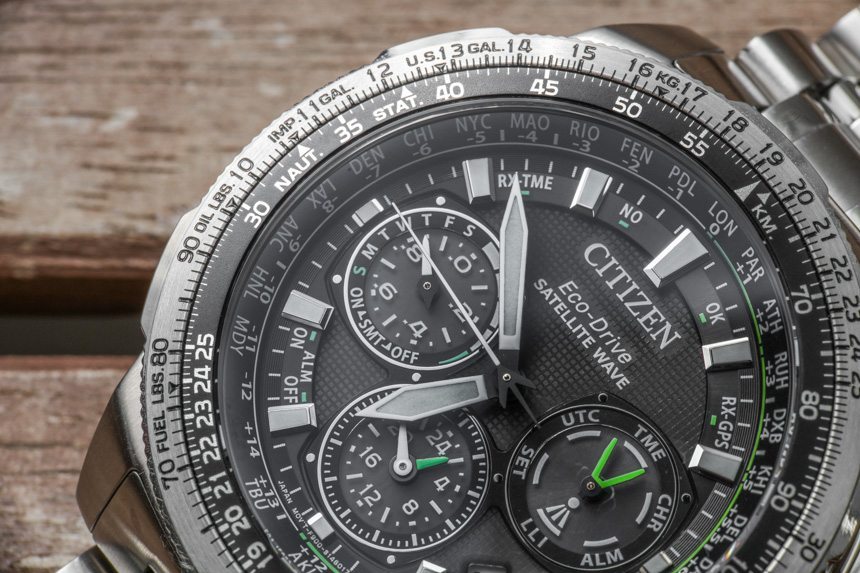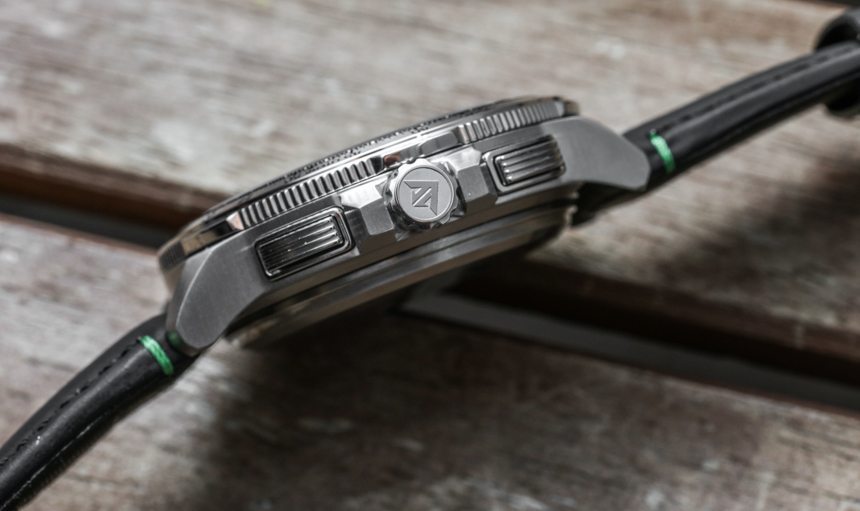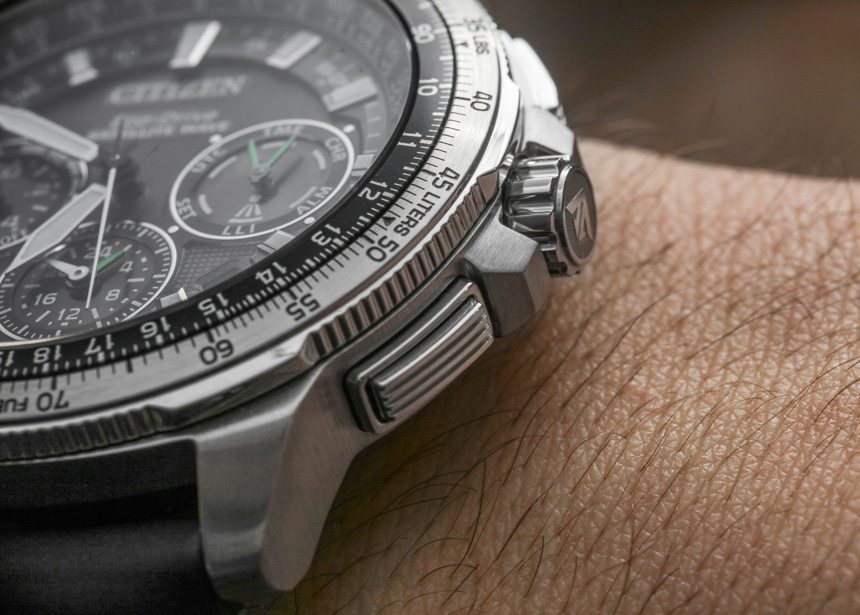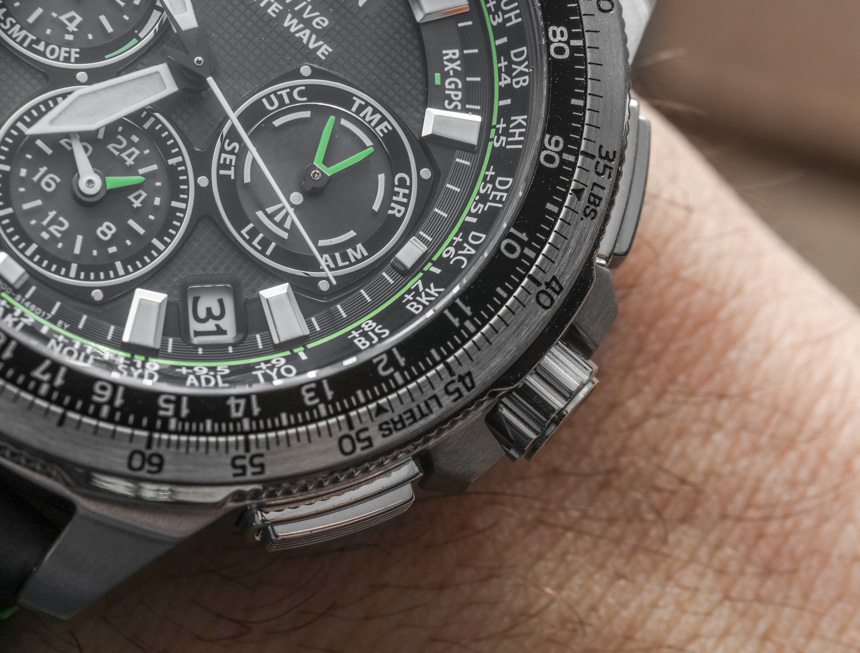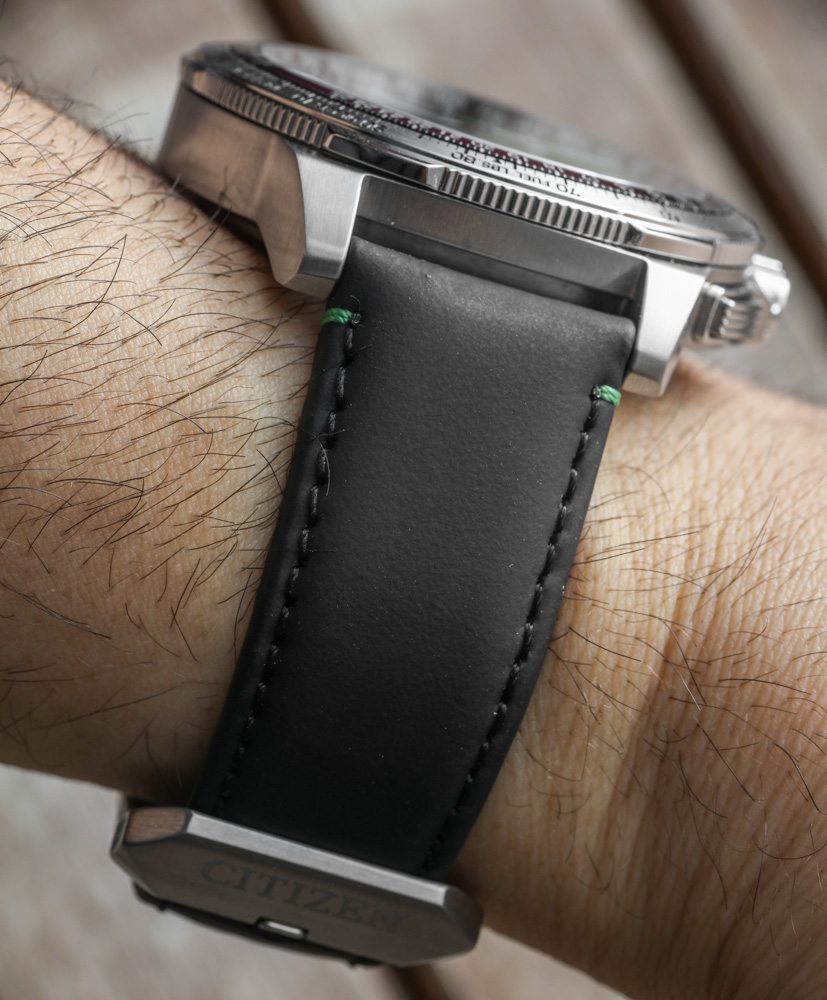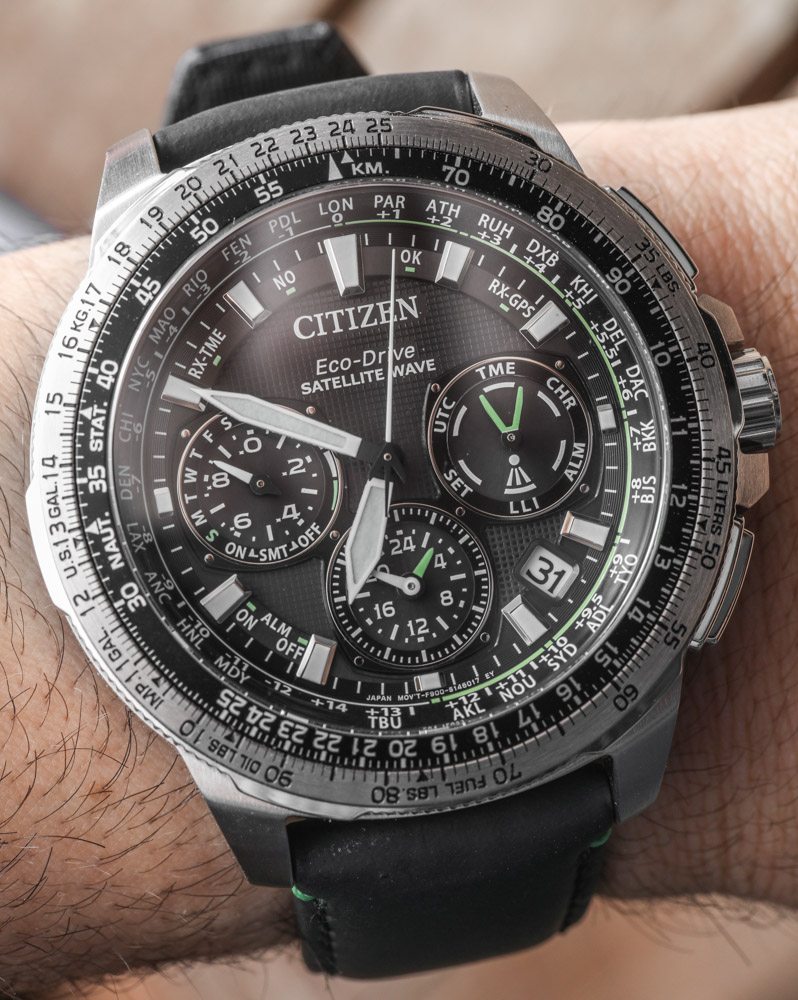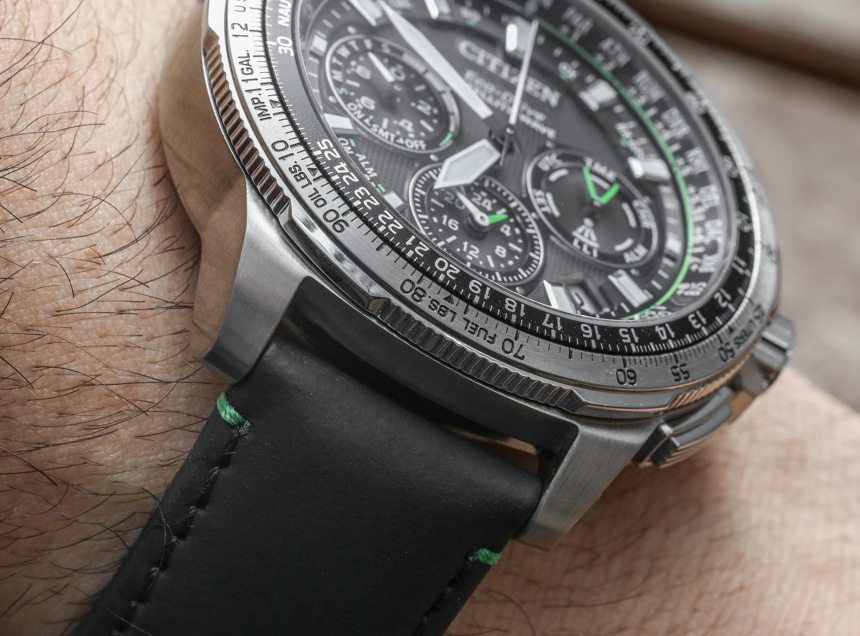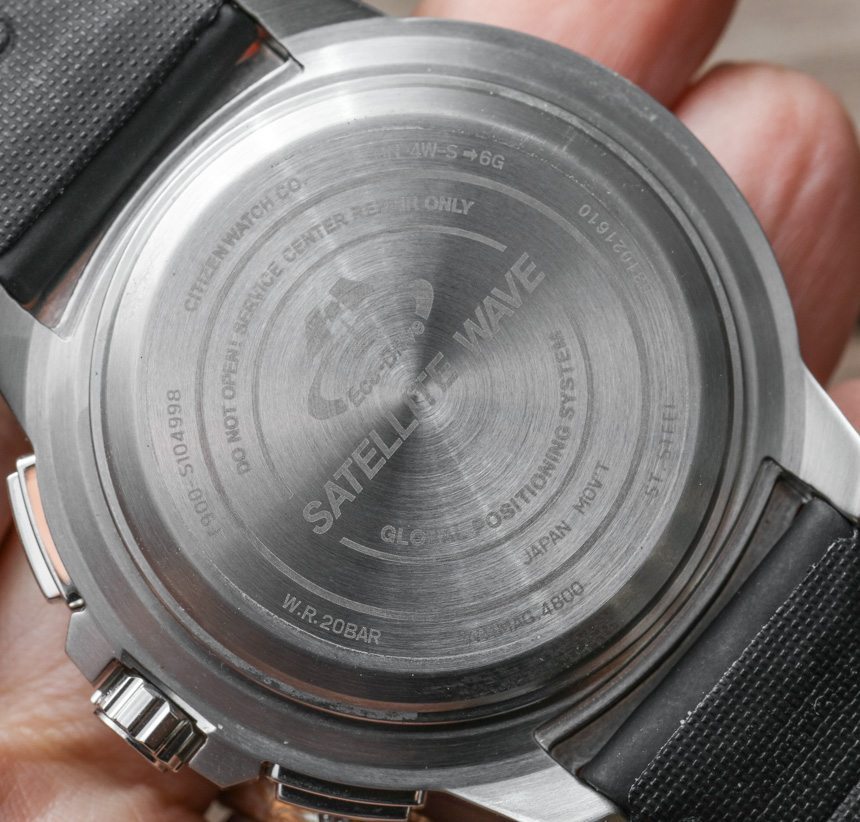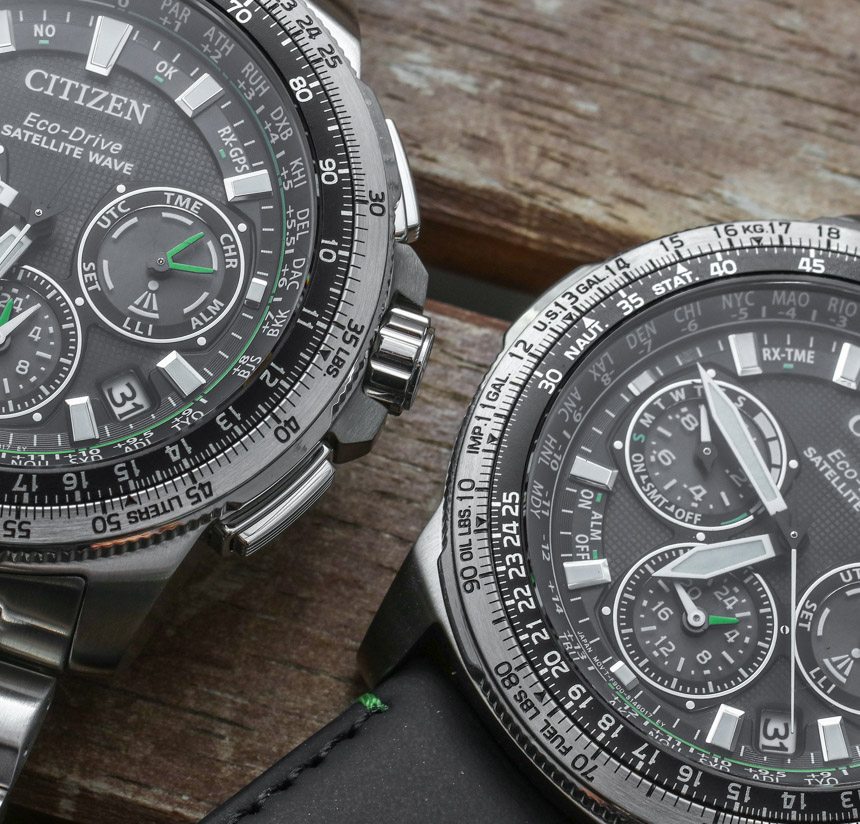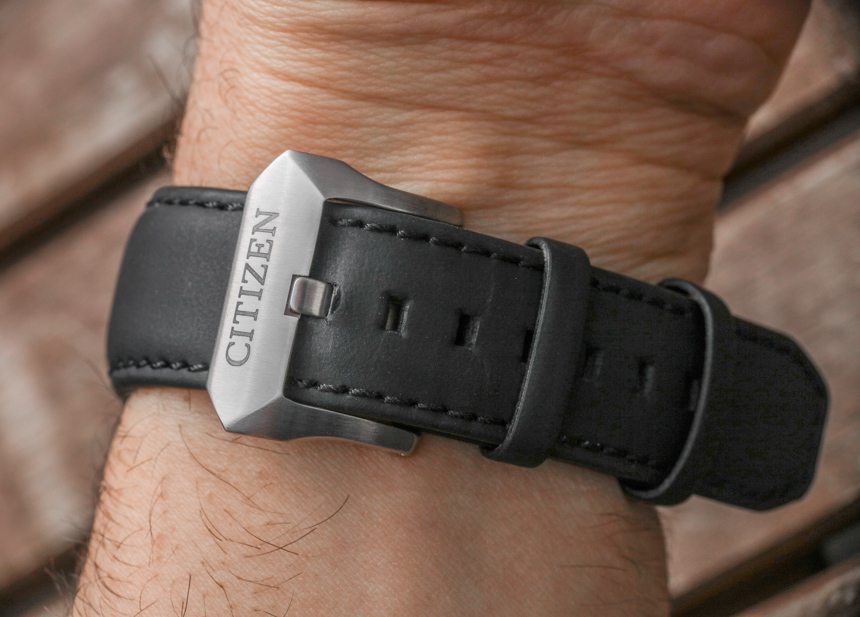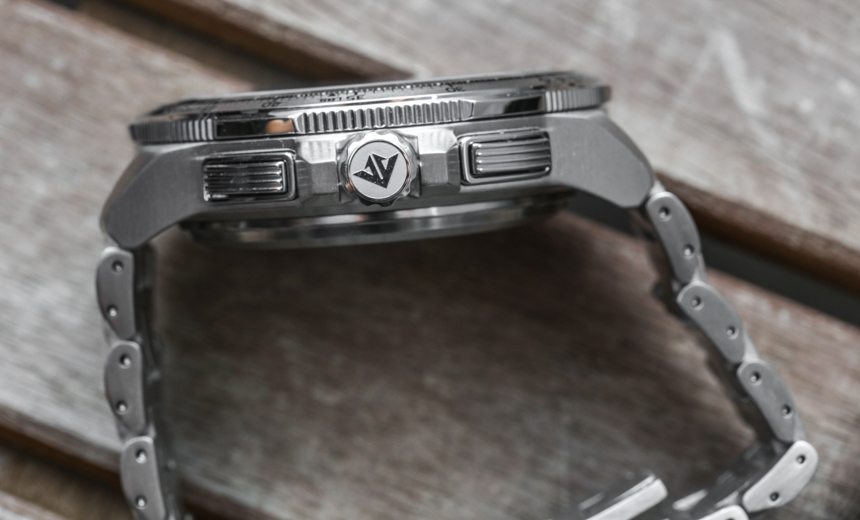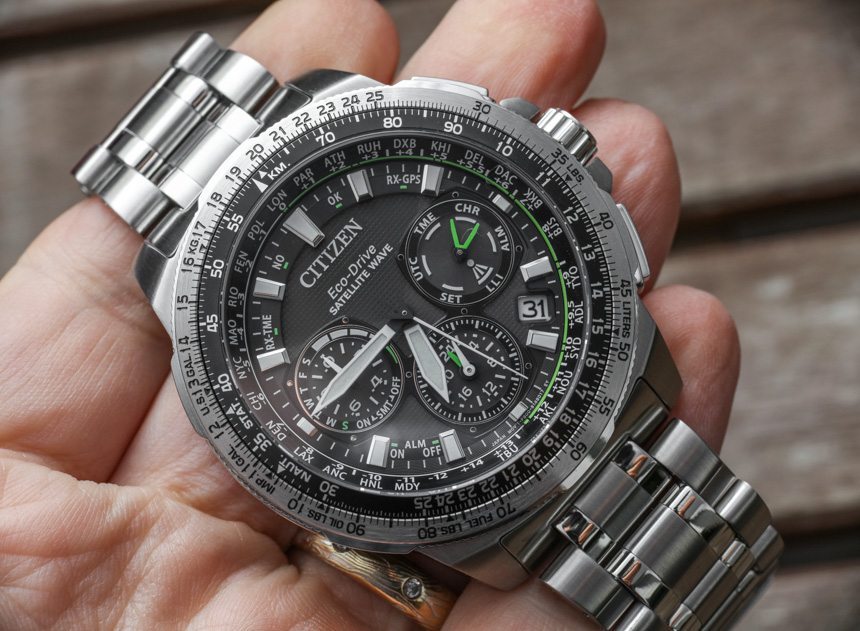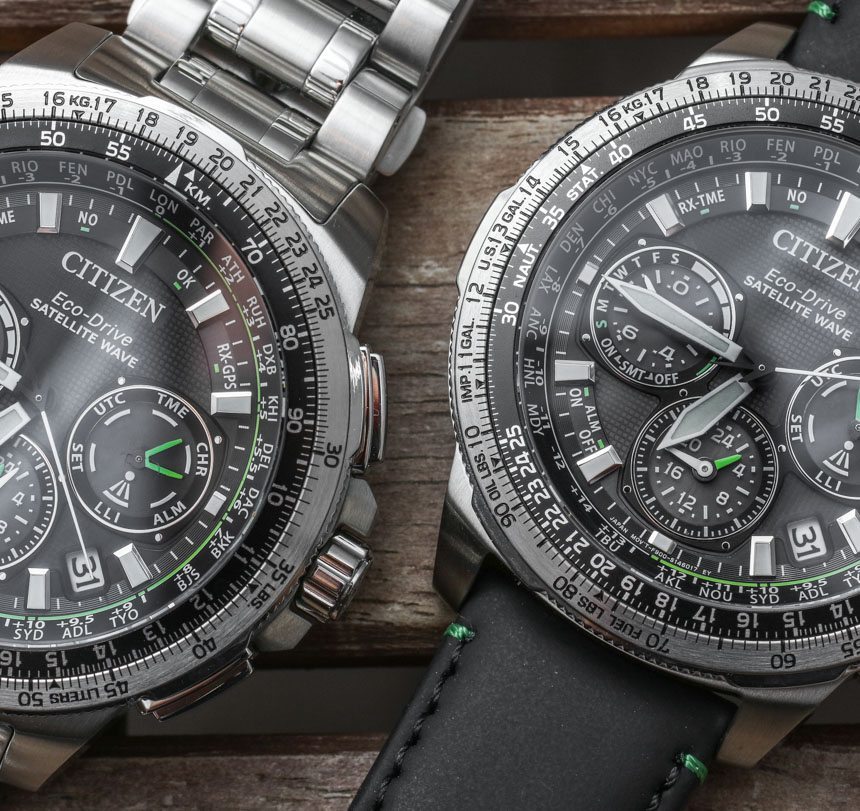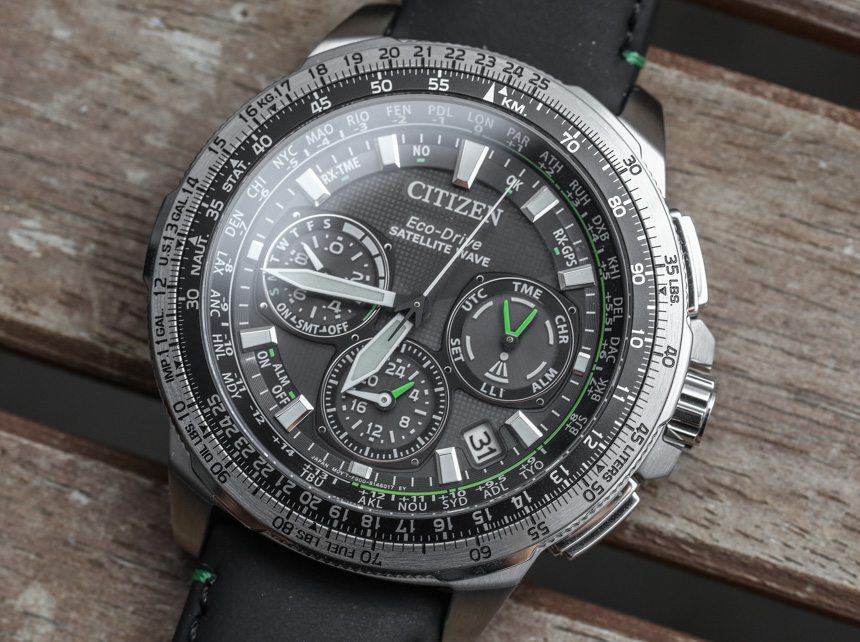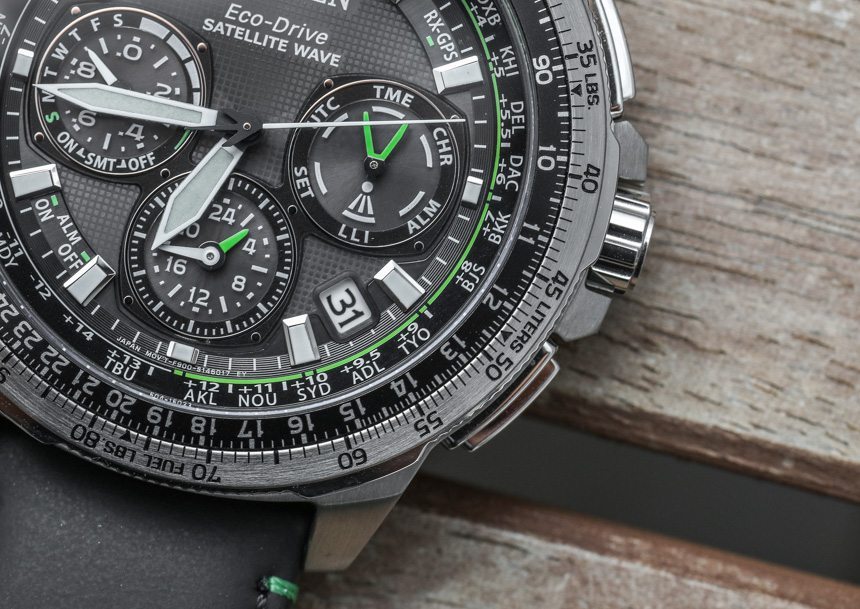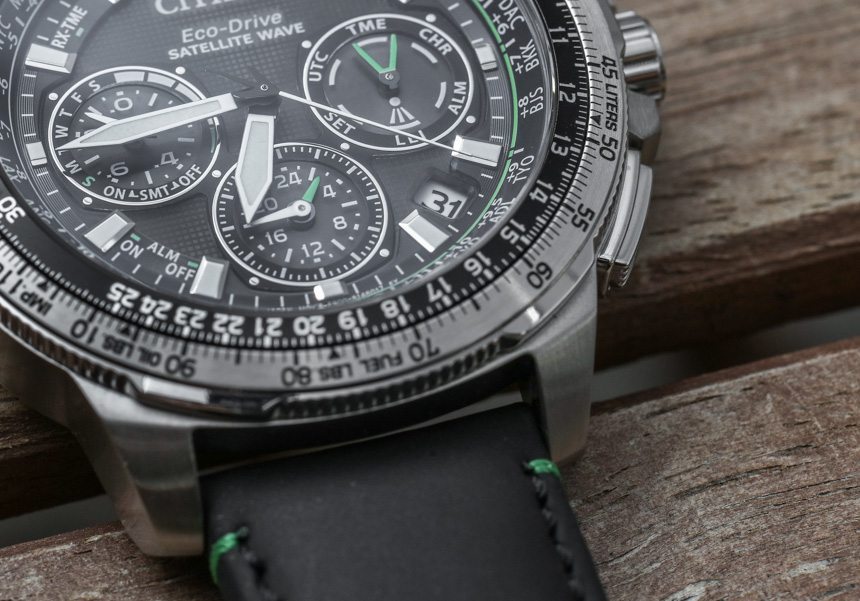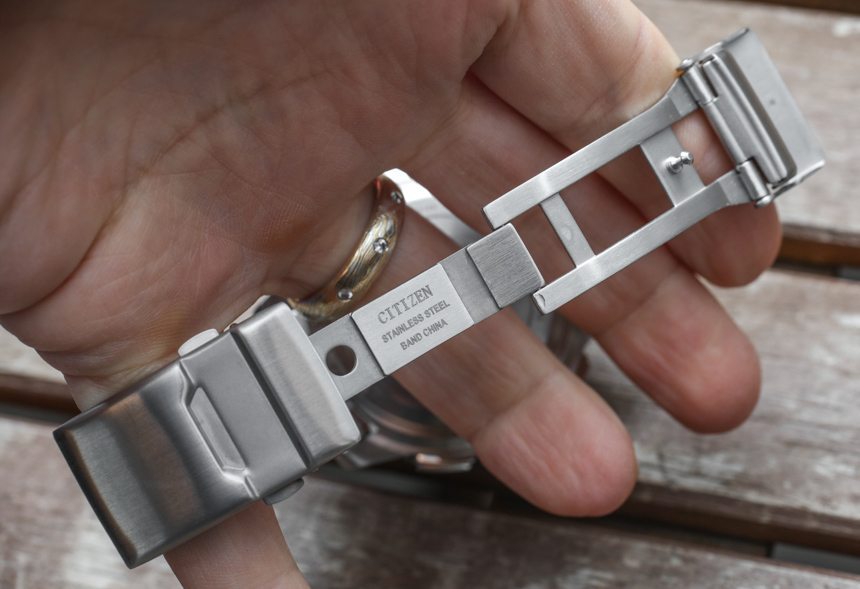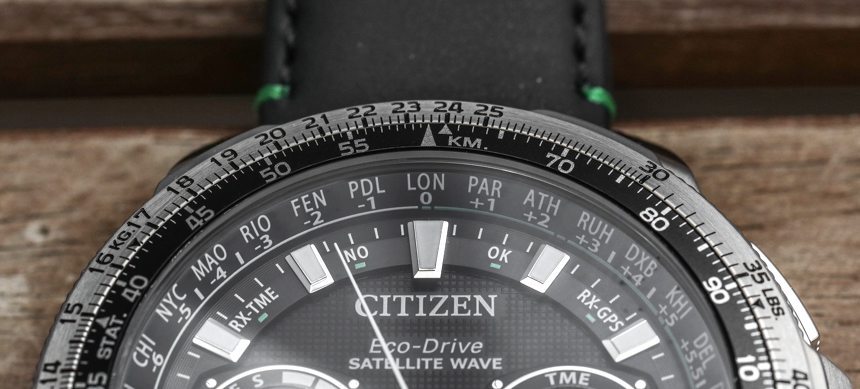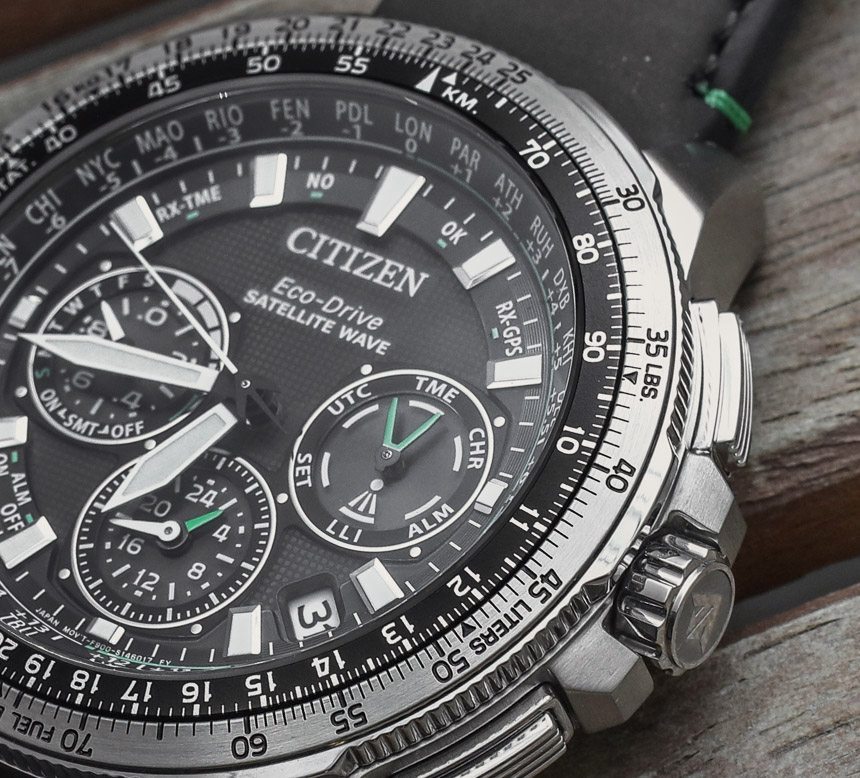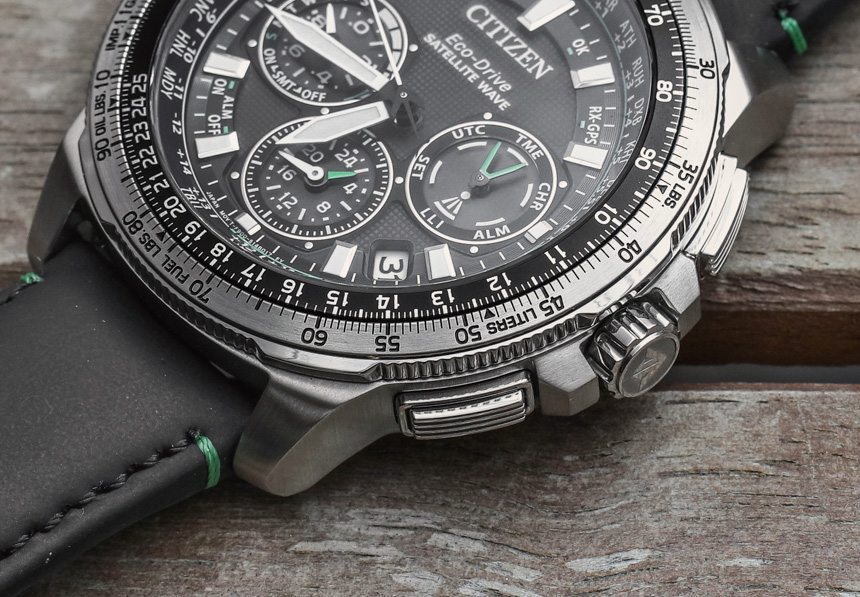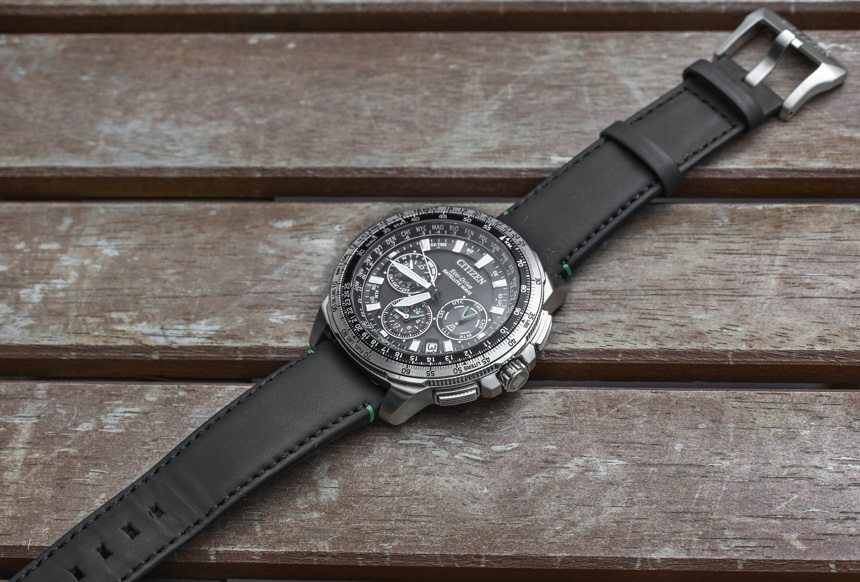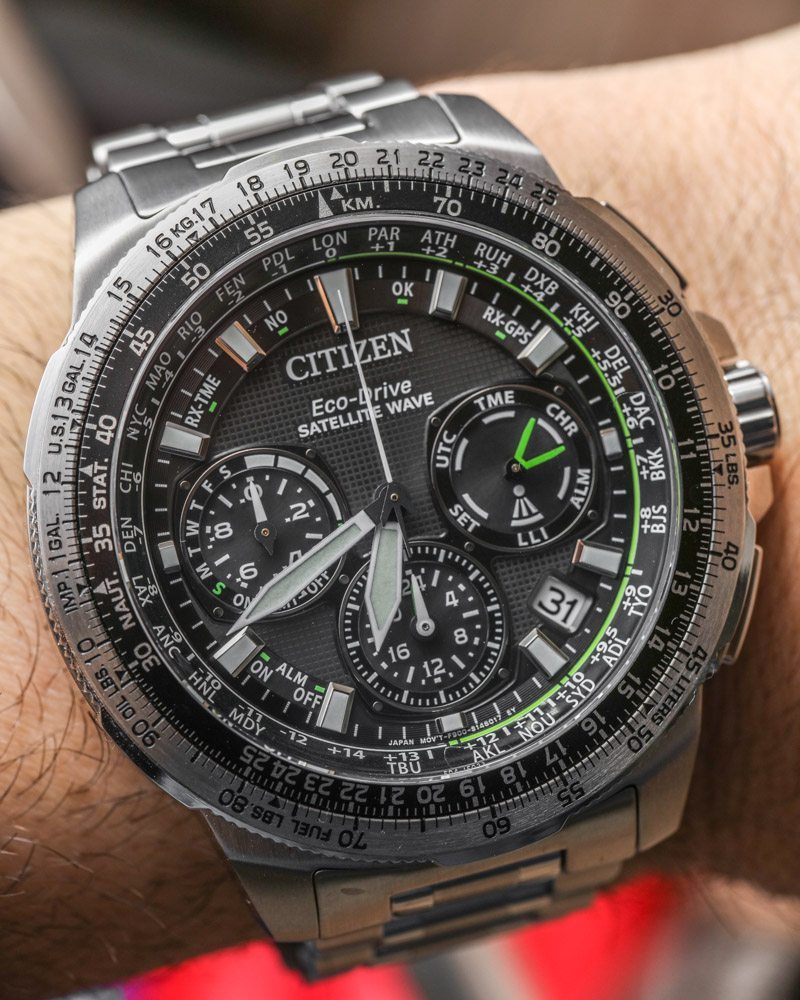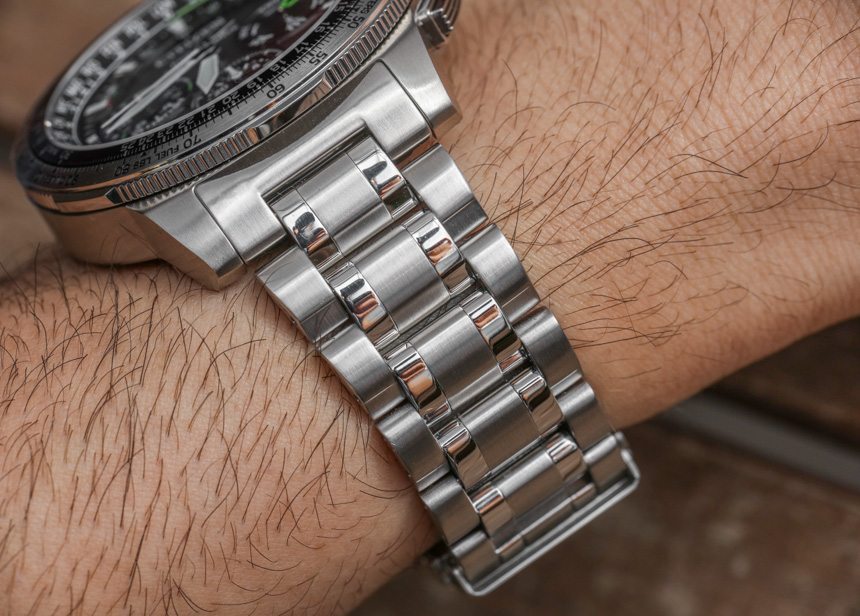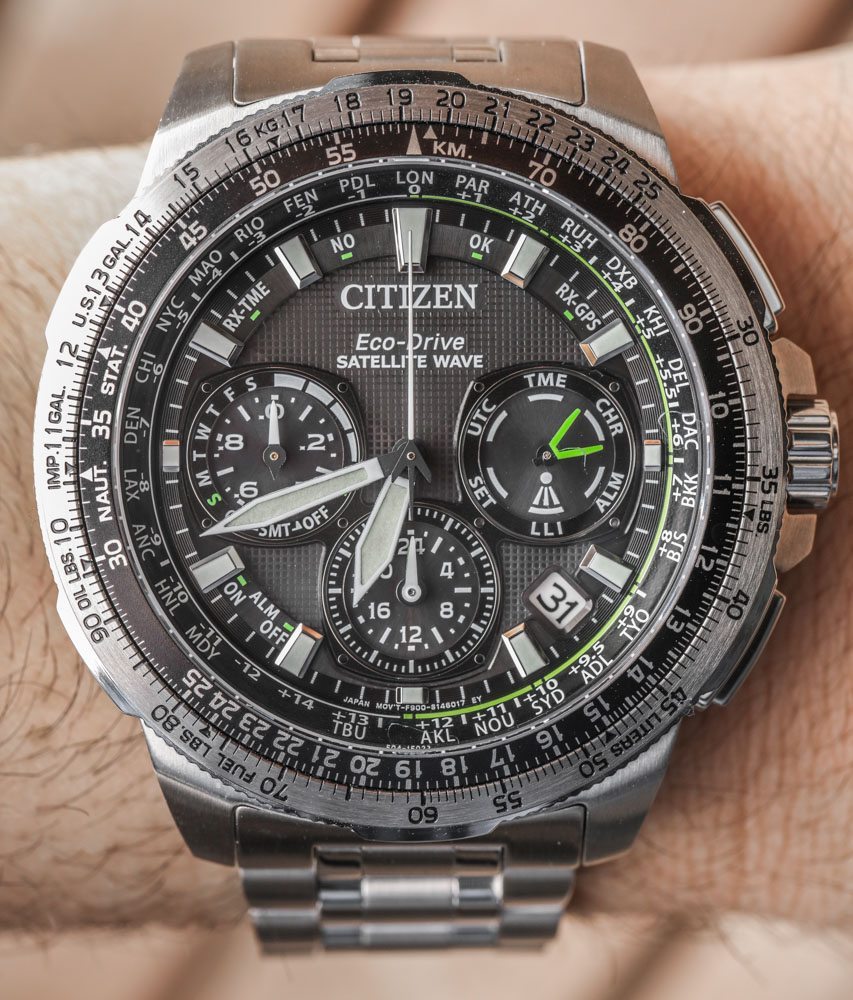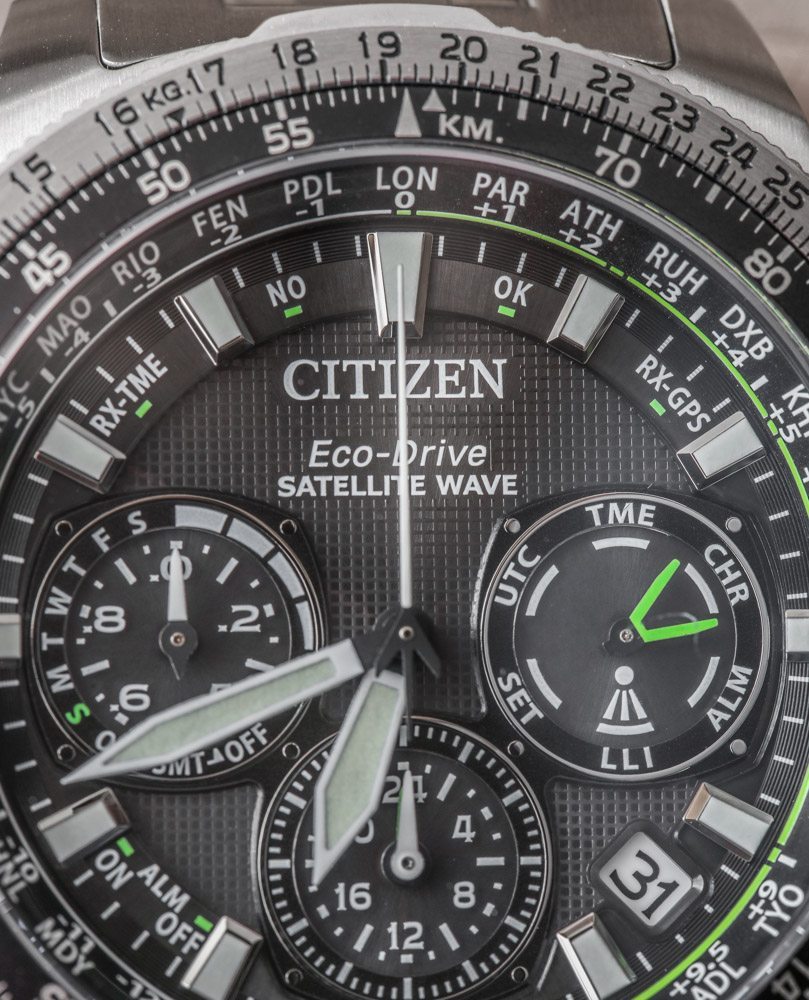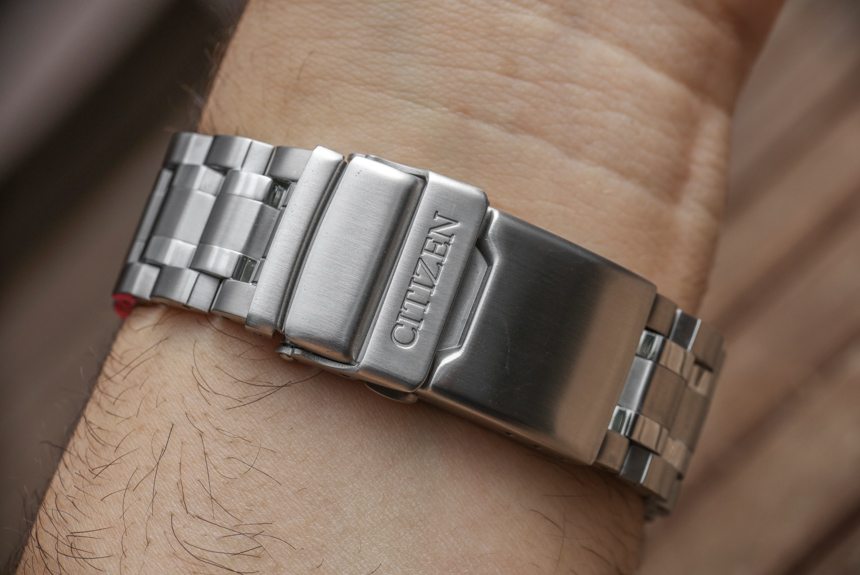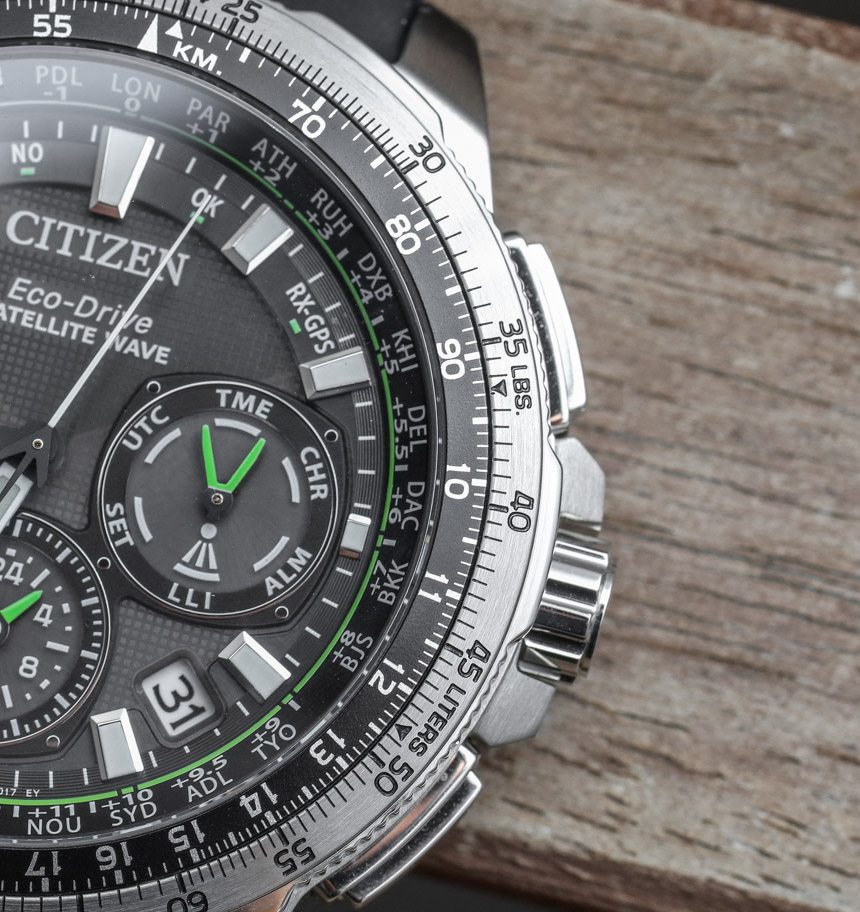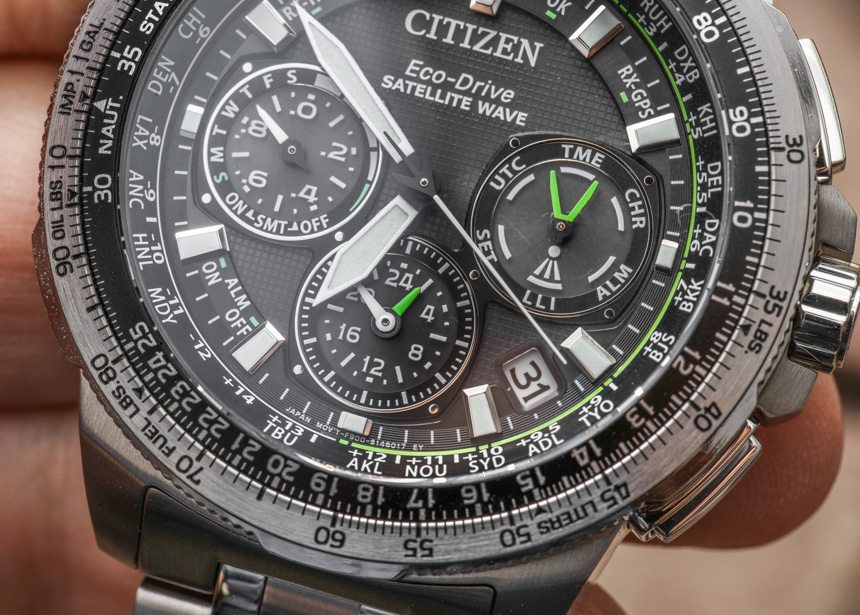
Look closely at the dial and you’ll see a lot of little markers that have to do with the various GPS functions, such as receiving a signal and whether or not the watch synchronized with the GPS signals properly. I am not going to dedicate any time to discussing too much about how to use the GPS functionality because Citizen has instructions for that which are going to be more complete. For the most part, what you need to know is that in order to manually synch with GPS and get the time updated, you press down a pusher until the watch goes into receiving mode – I discuss this more in the video.
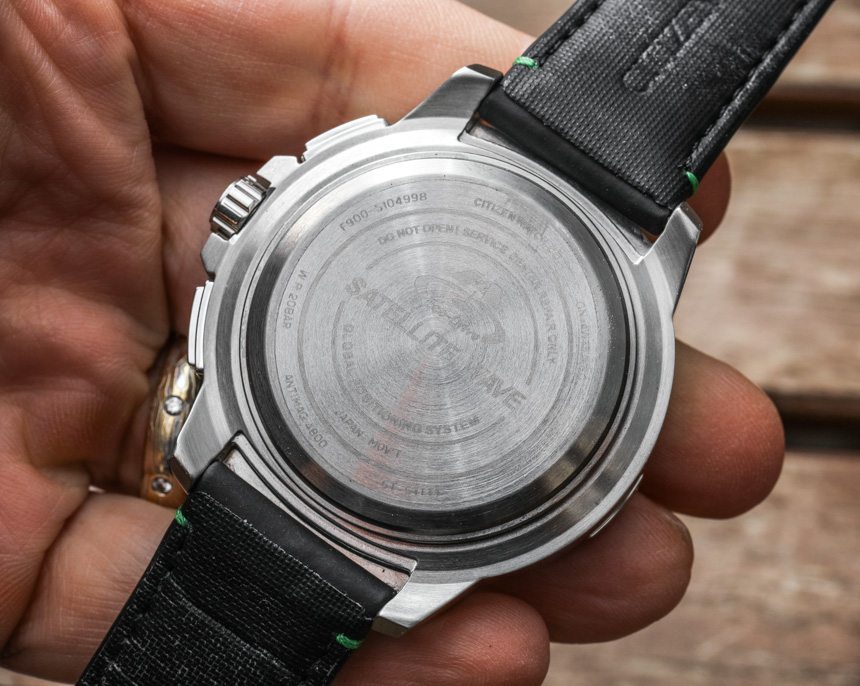
GPS connectivity is impressively good so long as you are outside. That means a usual sync time of under 10 seconds, and the watch actually receives signals from more than one satellite when possible. Indoors given the lack of signal (or very weak signal), you aren’t going to be able to use the GPS functionality. So that isn’t good news for cave dwellers (though they might have other problems to consider as well). Citizen Eco-Drive GPS watches love light, and they need to see the sky.
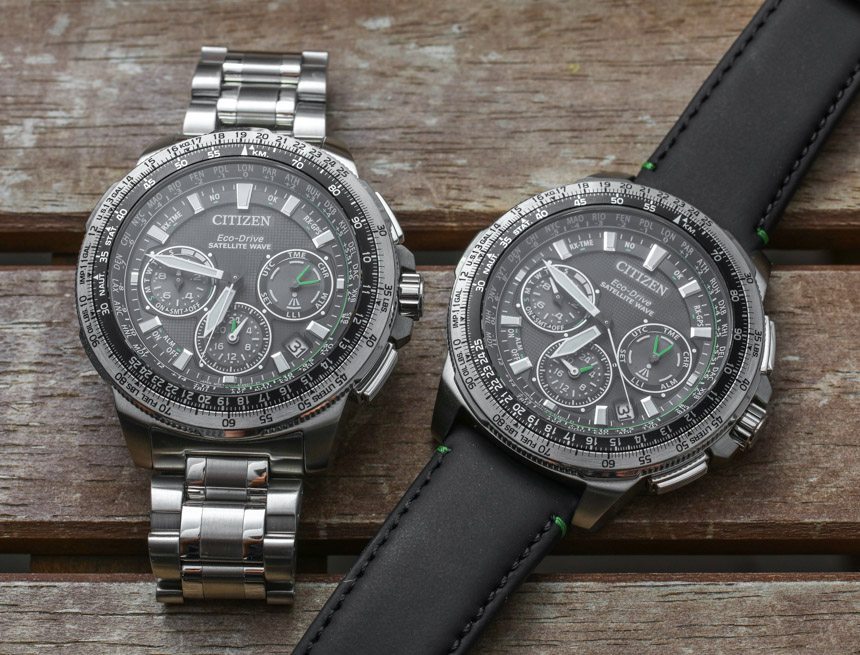
This particular reference CC9030-51E (and CC9030-00E) Citizen Promaster Navihawk GPS watch dial has a green ring around half of the inner dial as well as some additional green accents. Opt for the pricier black-coated titanium CC9025-85 and you get a fully monochromatic dial that more people might prefer. The green is subtle and is sort of a signature “GPS color” you seen in some Citizen GPS watches. I don’t mind it, but the watch would be slightly more timeless in pure monochromatic tones.
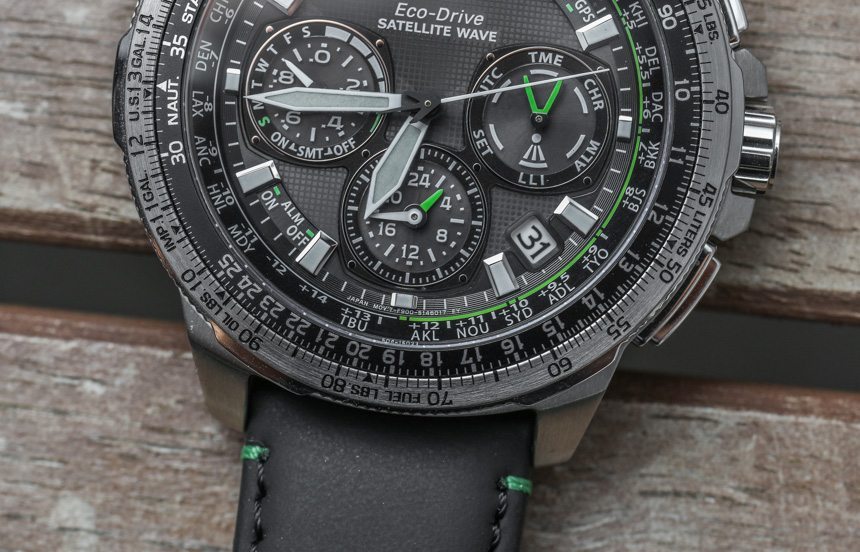
I could spend a few thousand words speaking about how to use the watch and its various features. If you want this Citizen Promaster Navihawk GPS or other GPS watches and need to rely on a specific feature then I recommend you carefully read their instruction manuals. For example, in order to use the chronograph feature you need to perform a few steps – such as pull out the crown, adjust the watch to chronograph mode, and wait for some of the hands to realign. Citizen uses its technology to make great use of fewer hands, but that means some features can’t be used at the same time. I would consider things like the chronograph to be more “good to know about if I need it” functionality, but this perhaps isn’t the perfect timepiece if you need to use a chronograph (stopwatch) feature all the time.
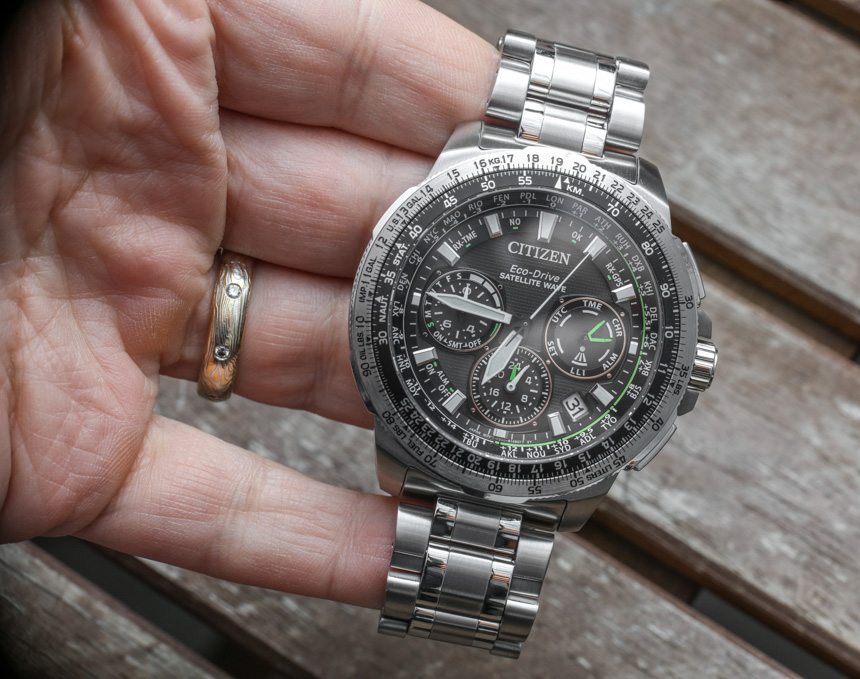
This and many other Citizen watches are ideal as “set it and forget it” watches, which is a goal of many Japanese timepieces. The idea is long-term reliability without any attention or hassle. This is fundamentally different from Swiss watches that often seek user engagement to create a different type of relationship with watch and wearer. A mechanical watch, for instance, requires regular winding and time adjustment. People who like that experience might find a timepiece such as this boring because they don’t need to mess with it. That’s really beside the point because a timepiece like this is a pure survival tool that you can depend on exclusively because it doesn’t need to be babied. If you can appreciate that (as I do), then you’ll quickly find a place in your collection for the Citizen Promaster Navihawk GPS (or something like it).
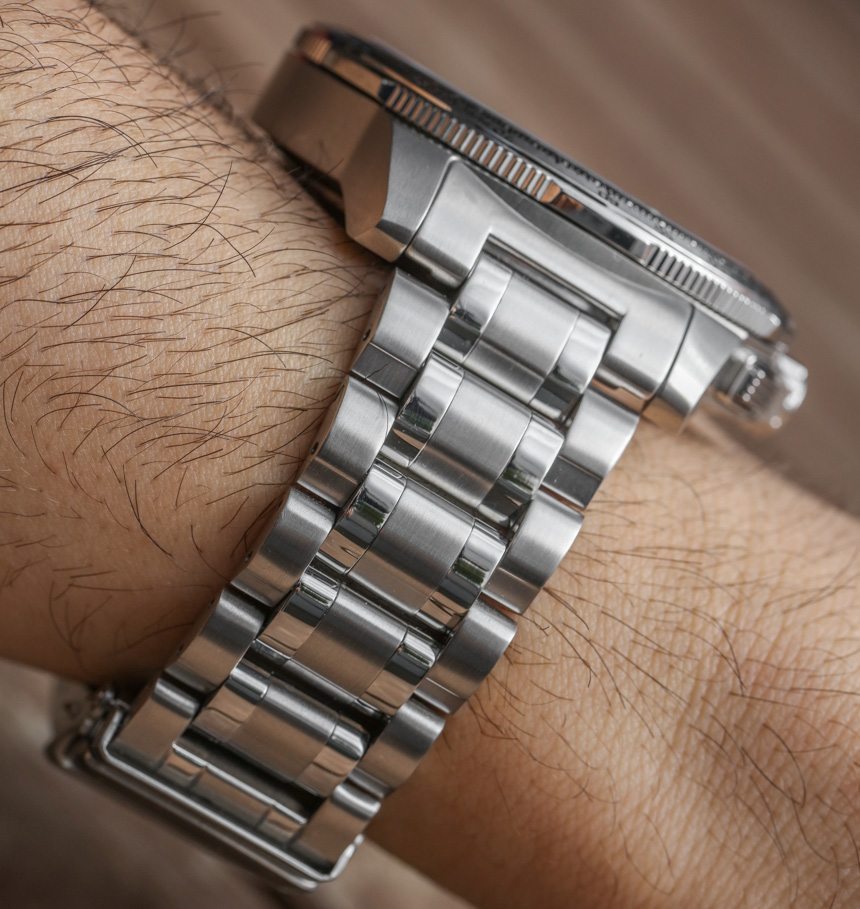
On the wrist, the Citizen Promaster Navihawk GPS is 47mm wide and about 14-15mm thick. That isn’t too bad given a pilot watch of this type. Citizen currently produces the watch with a steel or black-coated Super Titanium (hardened and scratch resistant) case, and on a bracelet or strap. I highly recommend the metal bracelet for style and comfort. If you prefer the watch on a strap, then I would consider getting an aftermarket strap. On the reference CC9030-00E steel model on strap, Citizen makes use of a black synthetic strap with contrast green stitching. I’m not in love with the colors or materials, but the good news is that you can put your own strap (22mm wide) on the watch easily enough.
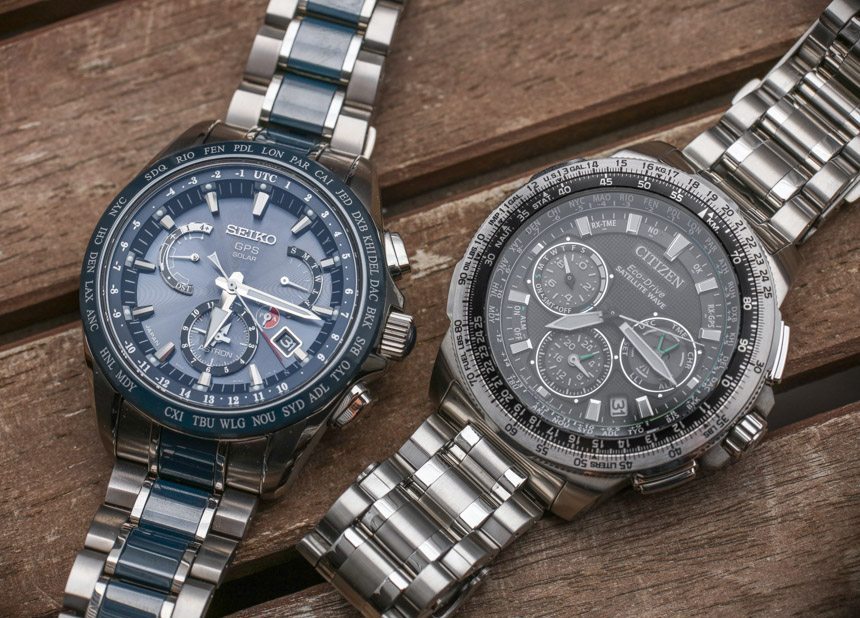
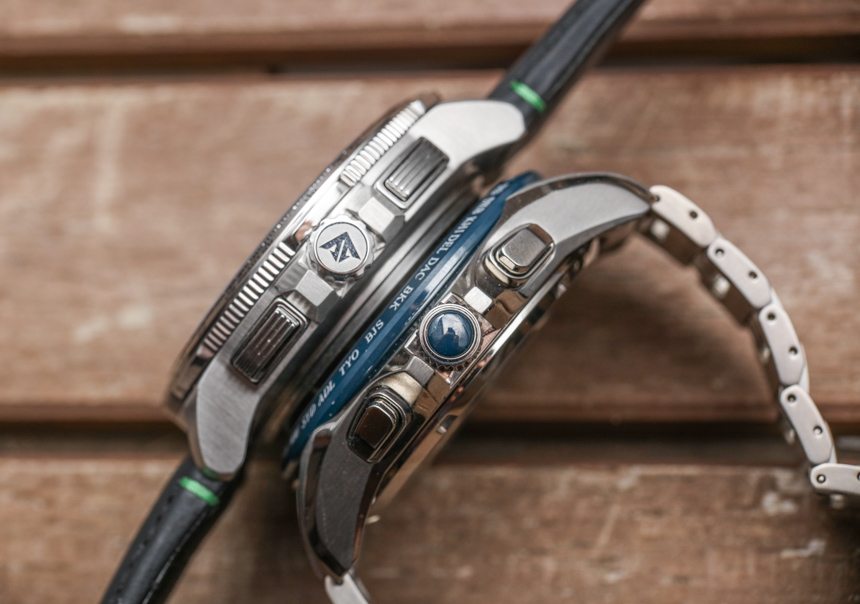
Funny enough, I measured the Promaster Navihawk GPS watch next to the Seiko Astron GPS Dual Time (aBlogtoWatch review here), and the dimensions are almost exactly the same – which I found interesting. Both are good watches, and they are direct competitors. If you like the more distinctive styling of the Seiko Astron collection, then go with that. The Citizen is going to be the best choice for people who want a more classic or conservative look with all this fancy functionality.
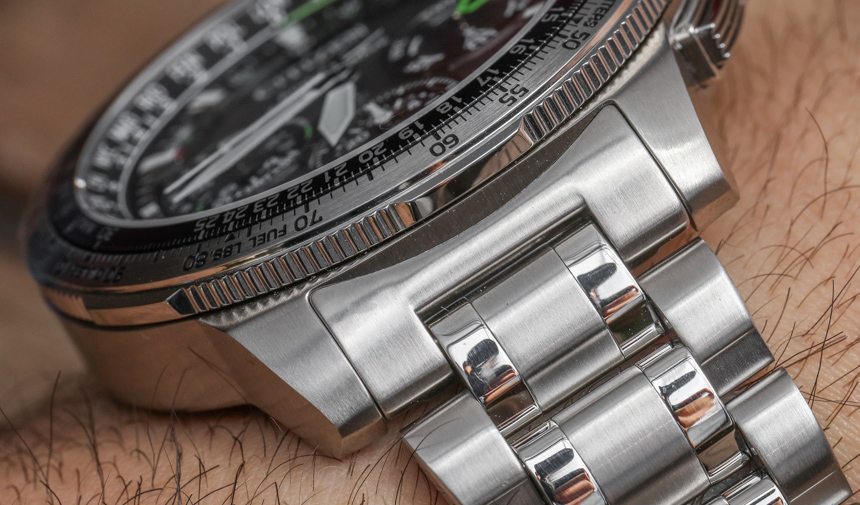
Further positive case construction details include use of an AR-coated sapphire crystal and water resistance of 200 meters. This really is a watch you can take out into the world with you and beat up. Citizen manages to get 200 meters even without a screw-down crown. I also find the case design to be attractive, being masculine with interesting details but by no means over-the-top. This watch has really grown on me, and the combination of traditional dial design, high-tech functionality, and the spirit of a seriously useful tool come together to create a product that, at least for me, is very endearing.
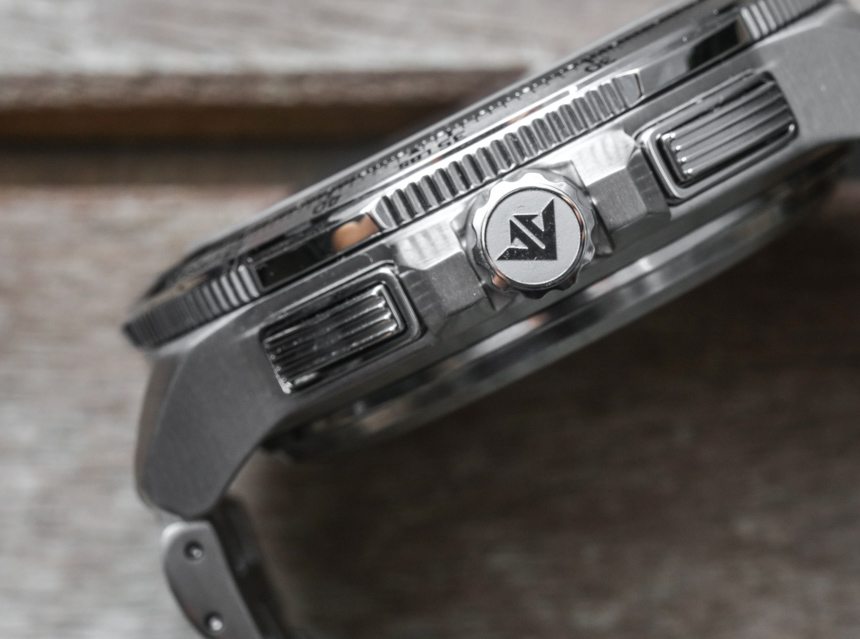
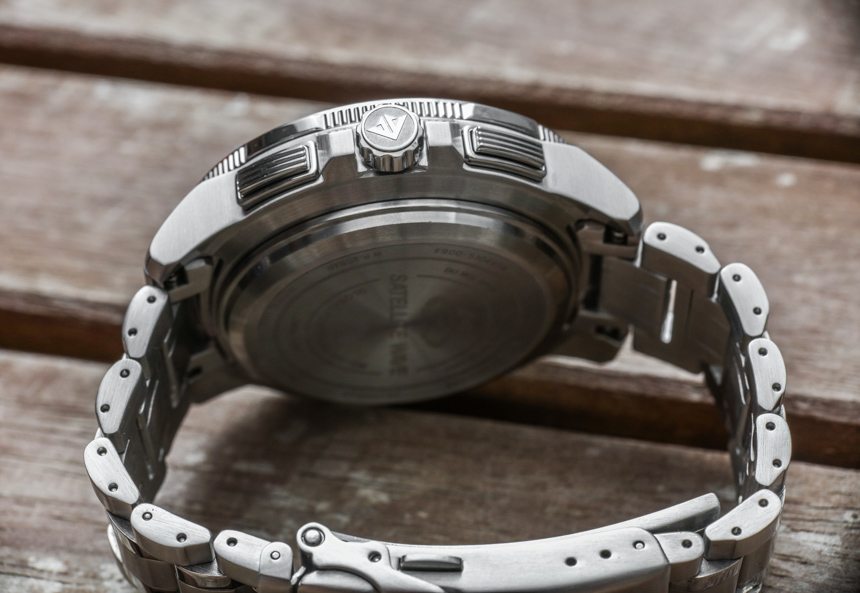
Citizen offers other models with its F900 movement, as we all know, and Citizen will continue to improve on its GPS watch functionality and performance as the years go on. If you want to avoid the smartwatch route for now, but still want something smart, a timepiece like the Citizen Promaster Navihawk GPS is really ideal. Further, even though this is “a more expensive Japanese watch,” the price feels really fair for what you are getting. Don’t forget that a lot of Japanese watches still operate on a “street price,” meaning that you can get one of these for under $1,000.
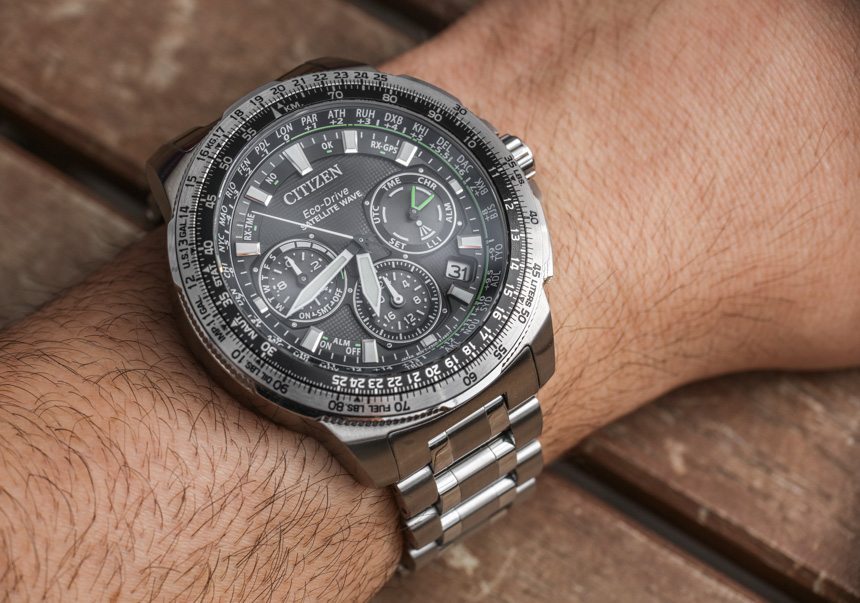
The top-of-the-line (for now) Citizen Promaster Navihawk GPS watch is the reference CC9025-85E in black-coated Super Titianium and it has a retail price of $2,095. Then, there are the two steel models which are the reference CC9030-00E on the strap with a retail price of $1,295, and the reference CC9030-51E steel model with the matching bracelet that has a retail price of $1,395. citizenwatch.com
Necessary Data
>Brand: Citizen
>Model: Promaster Navihawk GPS
>Price: $1,295 – $2,095
>Size: 47mm wide
>Would reviewer personally wear it: Yes.
>Friend we’d recommend it to first: Someone looking for a reliable and useful sport watch with a conservative character that will be accurate anywhere in the world.
>Best characteristic of watch: Beautiful mixture of utility and independence from tinkering. Attractive, conservative design offering a tech watch for an audience that doesn’t like the aesthetics of tech watches. A lot of watch for the money.
>Worst characteristic of watch: Given the price, you won’t see an absolute fanatic attention to fit and finishing as you might on a Swiss watch many times more expensive – but nevertheless, everything looks and works very well. Green color accents not for everyone. If you want a strap, you are better off getting your own.

